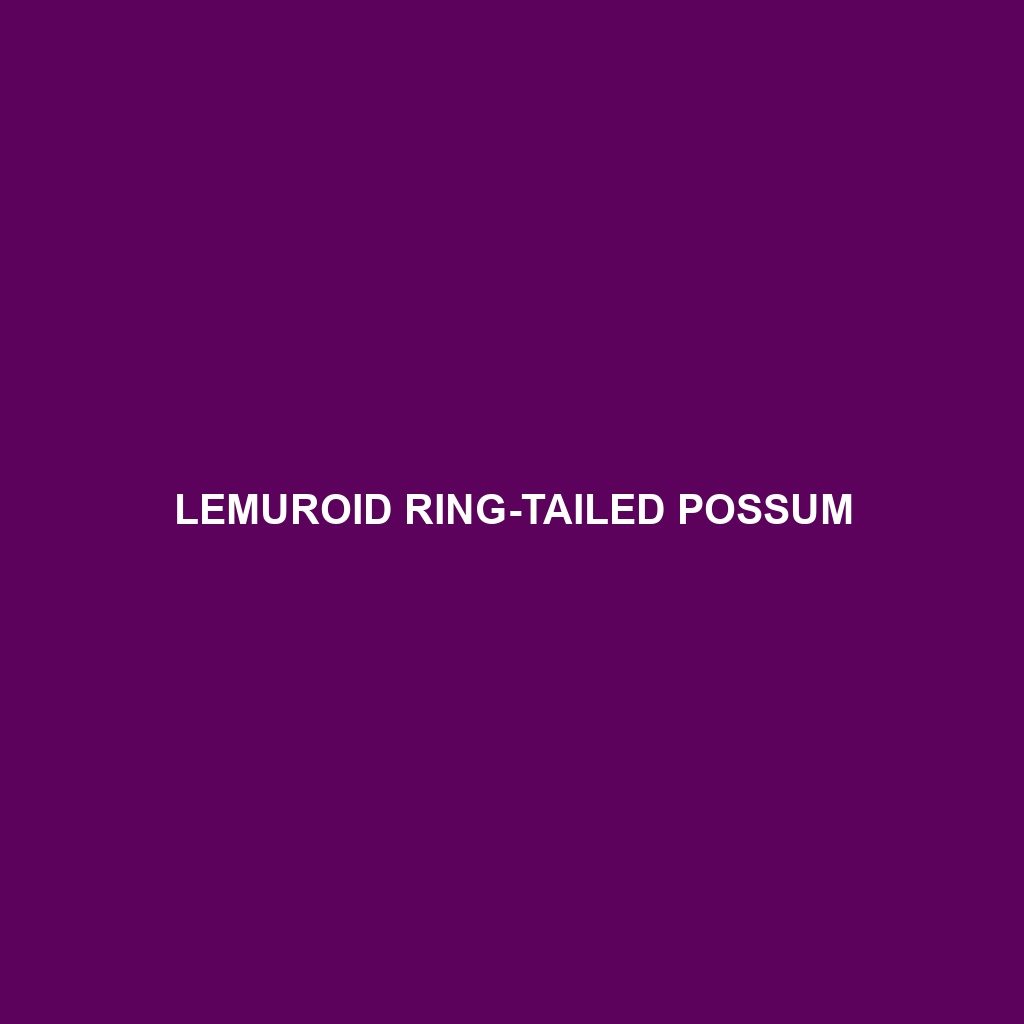Lemuroid Ring-tailed Possum: A Detailed Description
The Lemuroid Ring-tailed Possum (Hemibelideus lemuroides) is an enchanting marsupial native to the lush, tropical rainforests of northeastern Australia. Known for its arboreal lifestyle and distinctive physical attributes, this possum is a captivating example of nature’s adaptability and beauty.
Physical Characteristics:
Size: Adult Lemuroid Ring-tailed Possums typically measure between 30 to 40 centimeters (12 to 16 inches) in body length, with a tail of roughly equal length. They weigh between 900 grams to 1.2 kilograms (2 to 2.6 pounds).
Coloration: These possums exhibit a soft, dense fur coat that ranges in color from dark brown to almost black, with lighter, sometimes cream-colored underbellies. They have large, dark eyes that aid in nocturnal vision.
Special Features: Their prehensile tail is a key feature, used for grasping branches and aiding in their arboreal navigation. They also possess sharp claws and a specialized thumb-like toe on each hind foot for gripping.
Behaviors:
Social Interactions: Lemuroid Ring-tailed Possums are generally nocturnal and solitary creatures. They are known to be relatively shy and avoid direct confrontation, relying heavily on their camouflaging fur and swift movements to evade predators.
Feeding Habits: Their diet primarily consists of leaves, flowers, and fruits, making them folivores. They have a complex digestive system that allows them to extract nutrients from tough plant materials. Occasionally, they may also consume insects or small invertebrates.
Ecological Roles: As folivores, they play a vital role in their ecosystem by aiding in the pollination of flowers and the dispersion of seeds, thus contributing to the health and diversity of their rainforest habitat.
Habitats:
Geographical Range: The Lemuroid Ring-tailed Possum is found exclusively in the rainforests of the Atherton Tablelands in Queensland, Australia.
Environment: Preferring high-altitude, cool, and moist environments, these possums thrive in dense, old-growth rainforests where they can find ample food and shelter.
Adaptations:
Arboreal Adaptations: Their prehensile tail and strong limbs are perfect for an arboreal lifestyle, allowing them to navigate the complex canopy with ease.
Nocturnal Adaptations: Their large eyes are adapted for low-light conditions, enabling them to forage effectively during the night.
Dietary Adaptations: Their specialized teeth and digestive system are specifically evolved to process fibrous plant materials.
Conservation Status:
Current Status: The Lemuroid Ring-tailed Possum is currently listed as Near Threatened on the IUCN Red List.
Threats: Habitat destruction due to logging and climate change, particularly temperature increases that can affect their cool, high-altitude habitats, are significant threats. Conservation efforts are crucial to prevent further decline.
Fascinating Fun Facts:
Unlike many other possum species, Lemuroid Ring-tailed Possums have a highly specialized social structure, often forming small family groups.
They are one of the few marsupial species that can survive in temperatures as low as 2°C (35.6°F), thanks to their thick fur.
These possums have a unique vocalization repertoire that includes a variety of clicks and whistles used for communication within the dense forest canopy.
By understanding and appreciating the Lemuroid Ring-tailed Possum’s unique characteristics and ecological significance, we can better advocate for their conservation and the protection of their rainforest habitat.
